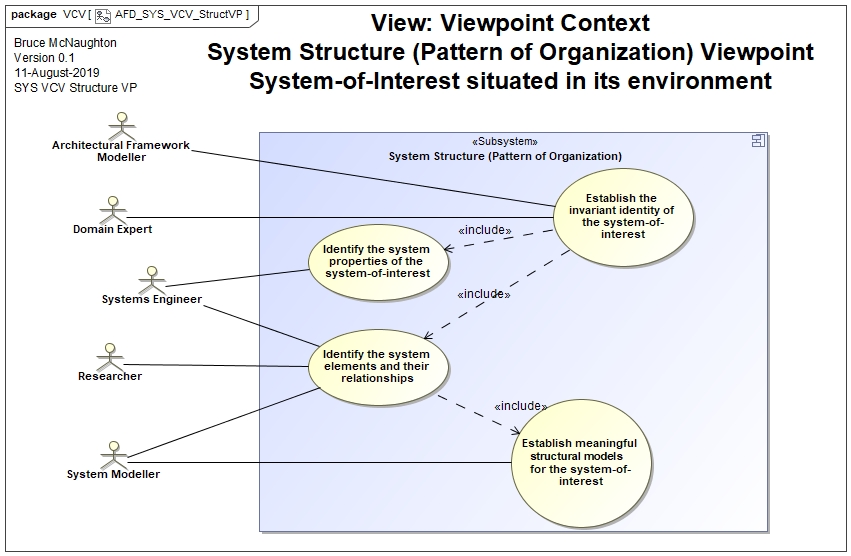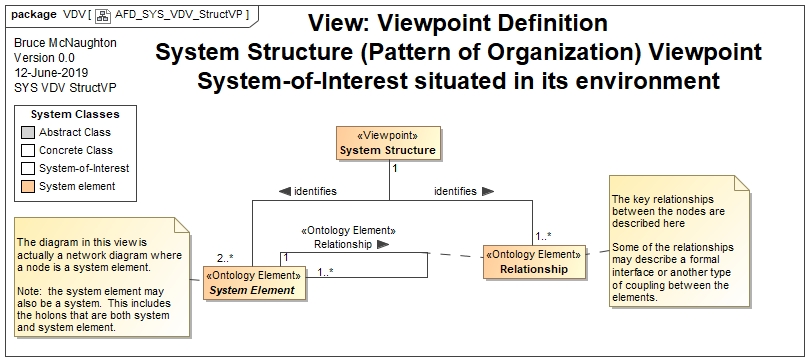System Structure (Pattern of Organization) Viewpoint
Description
This viewpoint provides the instructions to create the System Structure (Pattern of Organization) View in a System Description.
The System Structure identifies the system elements and their relationships.
This establishes the pattern of elements that will create the systemic properties.
The network pattern is the typical pattern used for this view.
Rationale
This view establishes the names and attributes of each of the system elements and defines the relationships between each of the system elements.
These elements and relationships remain constant across the many options / alternatives or instances of the structure in a system.
This view helps to establish the identity of the system-of-interest.
This view establishes a "logical model" of the system-of-interest.
Stakeholders and their Concerns

Ontology Concepts and System Descriptions

Models
The following models help identify the system structure:
- System Breakdown Structure (SBS) Diagrams
- Conceptual Models (Class Diagrams)
- Entity Relationship Diagram
- Network Diagram
Note: The conceptual model for a system-of-interest (Figure 2 ISO 15288:2023) is also known as a System Breakdown Structure (SBS). This includes both the hierarchical representation of systems within a system and a network of systems .
These models describe both the horizontal and vertical arrangement of the system elements. These elements may highlight:
- Systems within a System (holons)
- Systems of Systems (constituent systems interacting)
Steps to Create the View
- Identify the models to create for the view
- At a minimum, a System Structure or SBS Diagram (system element identification)
- Create the models
- Validate the models through a review.
Correspondences
- Identify and rules or constraints that must be followed to complete this view
Examples
SoI: Farm as an Enterprise situated in an Ecosystem See: System Description with Structure Section
Sources
State any references or people that have helped to define this viewpoint.
Notes
Provide notes and background information to track any changes or other information.